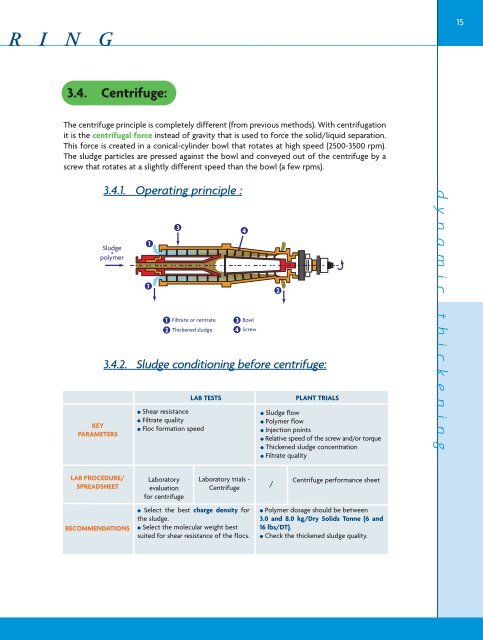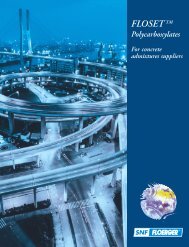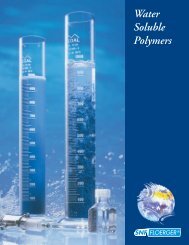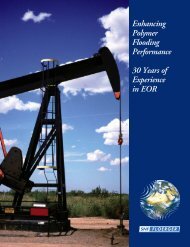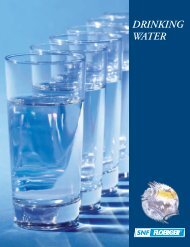SLUDGE DEWATERING - SNF Group
SLUDGE DEWATERING - SNF Group
SLUDGE DEWATERING - SNF Group
Create successful ePaper yourself
Turn your PDF publications into a flip-book with our unique Google optimized e-Paper software.
R I N G<br />
3.4. Centrifuge:<br />
The centrifuge principle is completely different (from previous methods). With centrifugation<br />
it is the centrifugal force instead of gravity that is used to force the solid/liquid separation.<br />
This force is created in a conical-cylinder bowl that rotates at high speed (2500-3500 rpm).<br />
The sludge particles are pressed against the bowl and conveyed out of the centrifuge by a<br />
screw that rotates at a slightly different speed than the bowl (a few rpms).<br />
KEY<br />
PARAMETERS<br />
LAB PROCEDURE/<br />
SPREADSHEET<br />
3.4.1. Operating principle :<br />
Sludge<br />
+<br />
polymer<br />
RECOMMENDATIONS<br />
1<br />
1<br />
3.4.2. Sludge conditioning before centrifuge:<br />
● Shear resistance<br />
● Filtrate quality<br />
● Floc formation speed<br />
3<br />
1 Filtrate or centrate<br />
2 Thickened sludge<br />
Laboratory<br />
evaluation<br />
for centrifuge<br />
LAB TESTS PLANT TRIALS<br />
Laboratory trials -<br />
Centrifuge<br />
● Select the best charge density for<br />
the sludge.<br />
● Select the molecular weight best<br />
suited for shear resistance of the flocs.<br />
4<br />
3 Bowl<br />
4 Screw<br />
● Sludge flow<br />
● Polymer flow<br />
● Injection points<br />
● Relative speed of the screw and/or torque<br />
● Thickened sludge concentration<br />
● Filtrate quality<br />
/<br />
2<br />
Centrifuge performance sheet<br />
● Polymer dosage should be between<br />
3.0 and 8.0 kg/Dry Solids Tonne (6 and<br />
16 lbs/DT).<br />
● Check the thickened sludge quality.<br />
d y n a m i c t h i c k e n i n g<br />
15


